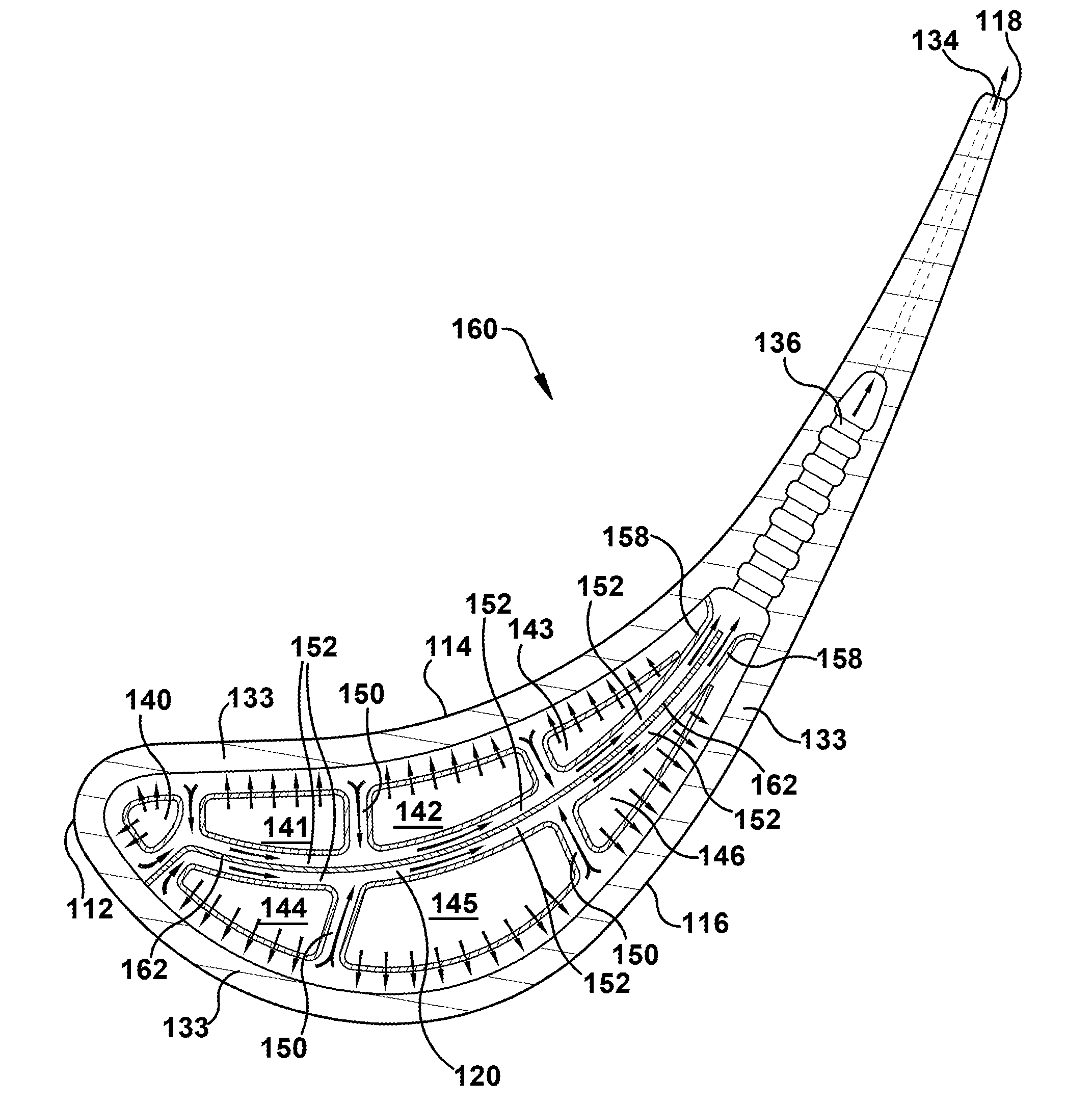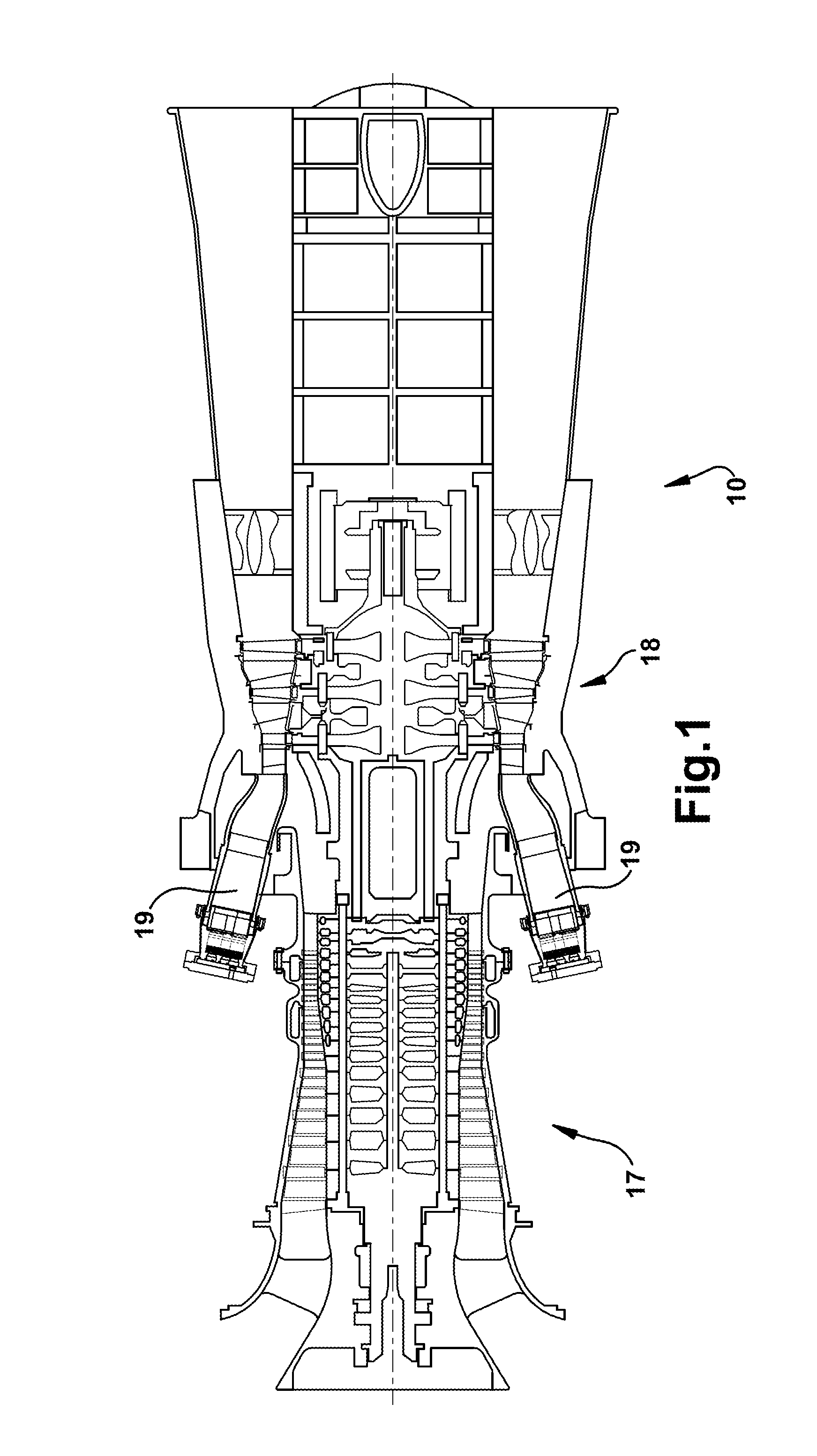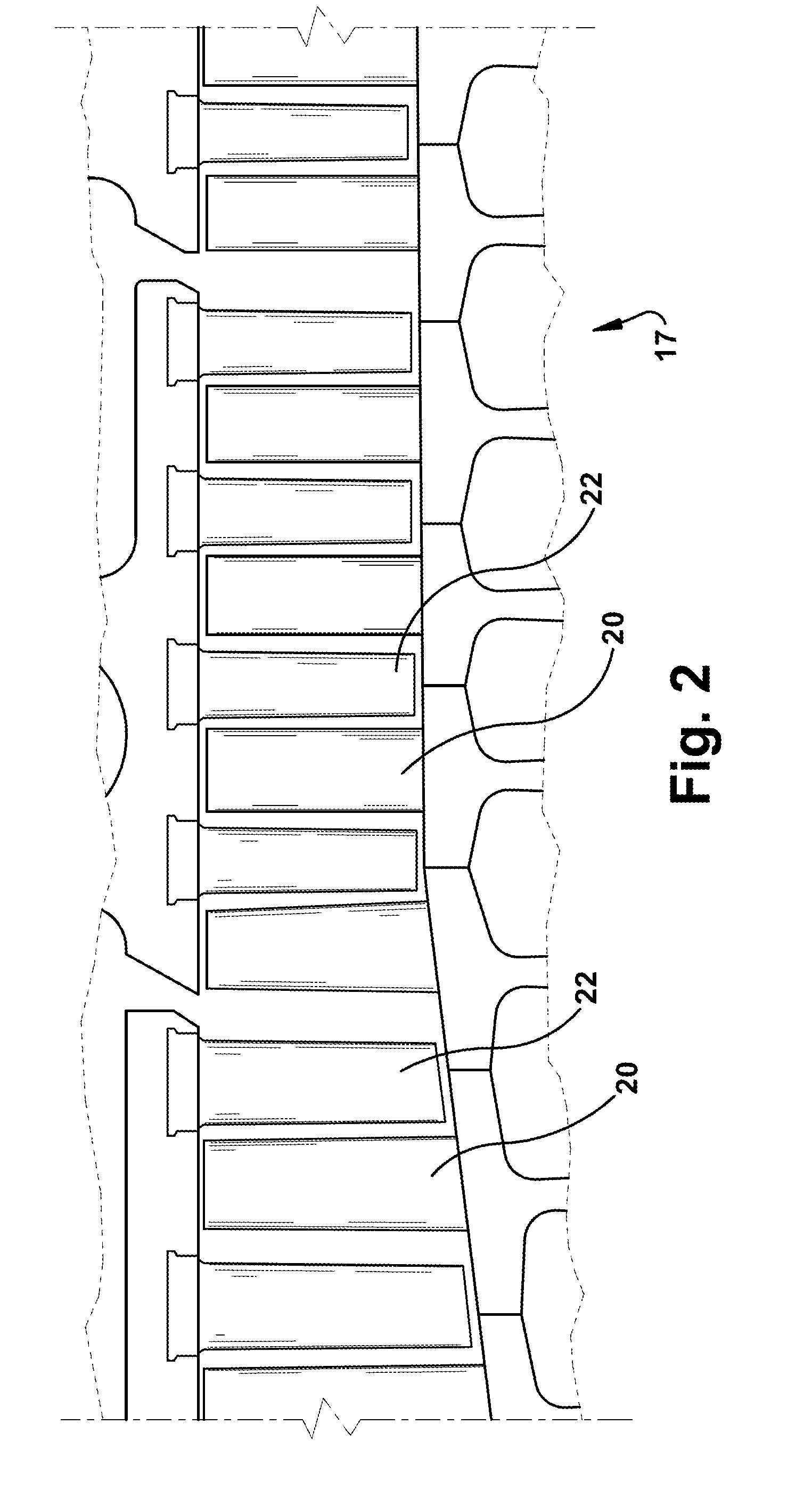Turbine blade cooling
a turbine blade and cooling technology, applied in the direction of machines/engines, liquid fuel engines, mechanical equipment, etc., can solve the problems of engine size, rotational speed, additional strain on parts,
- Summary
- Abstract
- Description
- Claims
- Application Information
AI Technical Summary
Benefits of technology
Problems solved by technology
Method used
Image
Examples
Embodiment Construction
[0017]Referring now to the figures,FIG. 1 illustrates a schematic representation of a gas turbine engine 10. In general, gas turbine engines operate by extracting energy from a pressurized flow of hot gas that is produced by the combustion of a fuel in a stream of compressed air. As illustrated in FIG. 1, gas turbine engine 10 may be configured with an axial compressor 17 (though other types of compressors are possible) that is mechanically coupled by a common shaft or rotor to a downstream turbine section or turbine 18, and a combustor 19 positioned between the compressor 19 and the turbine 18. Note that the following invention may be used in all types of turbine engines, including gas turbine engines, steam turbine engines, aircraft engines, and others. Hereinafter, the invention will be described in relation to a gas turbine engine. This description is exemplary only and not intended to be limiting in any way.
[0018]FIG. 2 illustrates a view of an exemplary multi-staged axial comp...
PUM
 Login to View More
Login to View More Abstract
Description
Claims
Application Information
 Login to View More
Login to View More - R&D
- Intellectual Property
- Life Sciences
- Materials
- Tech Scout
- Unparalleled Data Quality
- Higher Quality Content
- 60% Fewer Hallucinations
Browse by: Latest US Patents, China's latest patents, Technical Efficacy Thesaurus, Application Domain, Technology Topic, Popular Technical Reports.
© 2025 PatSnap. All rights reserved.Legal|Privacy policy|Modern Slavery Act Transparency Statement|Sitemap|About US| Contact US: help@patsnap.com



